Jorma Design Unity Cables & Interconnects

|
Jorma Design Unity Cables & Interconnects |
|
What Else Can I say? I Love ’em |
|
|
|
January, 2012 |
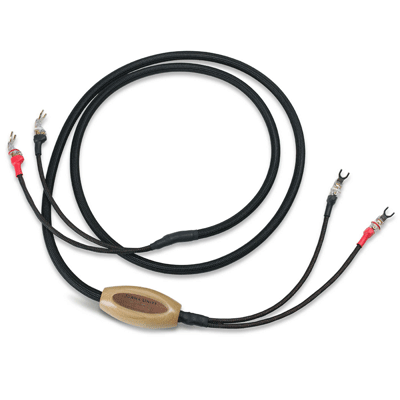 Dan Meinwald of Sound Advice always manages to have a great sounding room at the CES and this year, as usual, it was a standout. He used Jorma Design cables connected to Marten Design’s Coltrane II loudspeakers and their M Amp 600 mono amps. The sound was outstanding, highly detailed, very transparent and most importantly, musical.
Dan Meinwald of Sound Advice always manages to have a great sounding room at the CES and this year, as usual, it was a standout. He used Jorma Design cables connected to Marten Design’s Coltrane II loudspeakers and their M Amp 600 mono amps. The sound was outstanding, highly detailed, very transparent and most importantly, musical.
It was here that I finally got to meet with Jorma Koski from Jorma Design. I spent some time with him talking about (what else?) his cables and everything audio. I’ve been coming to the CES since 2004 and I’ve always enjoyed the sound of the Jorma Design cables, but unfortunately, I never have had the opportunity to review any of them. But this time things would be different. Jorma told me he would send me his new Unity cables (which replaced the No.1 cable back in June) for a review. I couldn’t have been more excited.
Jorma Design is a small Swedish company which exclusively manufactures high-end cables. As an audiophile and a hobbyist, Jorma started selling cables to the members of the Swedish Hi-Fi Forum starting around 2000. In 2002, a dealer from Stockholm convinced him to start his own company and the rest is history. When he started the company, he never thought that he would make a living at it but hoped he’d be able to buy a better system for himself. Fast forward three years later and demand was so high that he had to quit his job as a service engineer for ABB Building Systems.
Jorma has an engineering background and grew up with close ties to music from childhood and he didn’t have television until 1960. He remembers when his father bought a “His Masters Voice” radio and vinyl record player with a tube amplifier. Every evening there was music in his house; a mix of opera, rock, blues and jazz. He wanted his own stereo system but he could not afford it, so he built one when he was 14 or15 years old. It was a hardwired battery driven stereo amp and speakers from old radios. He even built his own boxes. He told me he was very happy but his parents’ system sounded better. Later on in 1970, he built speakers using an IMF Transmission line (TLS 80) and Dynaco amps from DIY kits.
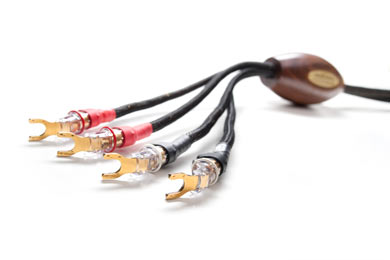 After waiting for what seemed like an eternity, I received a nice sized package from Sweden in late Fall. It contained one pair of speaker cables and two pairs of interconnects. It was impressive that each cable came with its own carrying case instead of a plain-Jane cardboard box. You know what they say, your first impression is often your last and this was a good one. The cables are handmade and crafted beautifully with an exceptional fit and finish, like the finest of European automobiles. The Unity cables come with an elegantly styled maple and copper attachment on the directional end.
After waiting for what seemed like an eternity, I received a nice sized package from Sweden in late Fall. It contained one pair of speaker cables and two pairs of interconnects. It was impressive that each cable came with its own carrying case instead of a plain-Jane cardboard box. You know what they say, your first impression is often your last and this was a good one. The cables are handmade and crafted beautifully with an exceptional fit and finish, like the finest of European automobiles. The Unity cables come with an elegantly styled maple and copper attachment on the directional end.
Jorma Koski thoughtfully breaks the cables in for 72 hours before shipping. They only needed a few days of listening to complete the break-in period. This made my life so much easier as a reviewer, because most cable manufacturers recommend at least a couple hundred hours for a break in period. Normally, I would have to burn-in cables for about two weeks continuously.
Technology from the Jorma Design Website
A look at the Jorma Design website reveals just how meticulous Jorma Koski is:
Our loudspeaker cables and interconnects are composed of copper of the best possible quality.
We decided to use this material after experimentation with many other materials, as well as with other copper configurations. Copper delivers the most neutral, transparent, and natural musical signal. All cables employ the purest possible copper. This purity does not only refer to oxygen, but to ALL polluting materials and metals. All conductors are subjected to a spark test using 6000 V impulse tension before we use them to produce our cables.
Jorma Design cables employ sophisticated shielding to reject radio frequency interference (RFI) and electromagnetic interference (EMI), and to stabilize the cables against vibration and micro phonics. The shielding for all Jorma Design cables (except No. 3 speaker cables) is a heavily shielded, tin-plated copper that works very effectively in combination with the special geometry of the conductors to ensure that up to 98% of the incoming and outgoing RFI and EMI are removed without any compromise to the audio signal.
One question that is frequently asked about Jorma Design cables is: Why are they so thin? For that price, shouldn’t they be thick and heavy? The problem with taking diameter as an indicator of quality is that making Jorma Design cables thicker would adversely affect the sound. We have found that using the least amount of the insulation that surrounds the conductors results in the best sound. If we were to use more than is absolutely necessary to make the finished product strong, safe, and long lasting, it would degrade the sound. That is why our cables look the way they do.
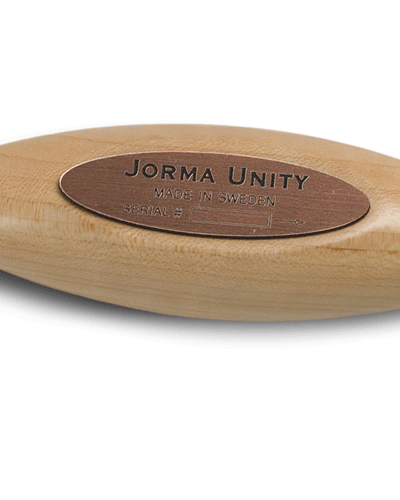 Enough already: How does it sound!?
Enough already: How does it sound!?
I used a two meter run of speaker cables between my Karan Acoustics KSA 450 amp and the Consensus Conspiracy loudspeakers, and a pair of 2.5m XLR interconnects between the Karan Acoustics reference dual mono preamplifier MKII and my remarkable new reference Pi Greco Sinfonia CD player from Italy. Lastly, I used a pair of 2m XLR interconnects between the KSA 450 and MKII preamplifier. Unfortunately, the power cords won’t be available until early 2012.
Simply put, my system sounded great from the first day with the Unity cables, but I let them play for few more days before doing any serious listening. With the Unity cables in my system, the sound was very transparent, remarkably natural, and had richer detail with slightly improved timbre accuracy, as compared to my reference ASI cables; it’s quite amazing that the Unity cables are a touch better regarding the already excellent timbre accuracy which I love so much from the ASI cables.
It didn’t matter what type of music I played; it all sounded superb. Whether it be chamber or orchestral classical music or Jazz. It just sounded better. The Unity has an extraordinarily natural sound that is easy to hear and it thrilled me with its unusual realism. It was like listening to live unamplified music. I knew right away that me and my bank account were in trouble.
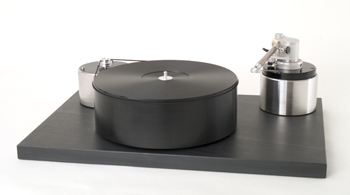
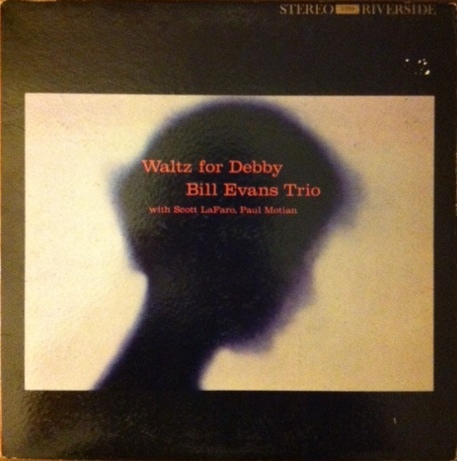
I recently gave myself an analog front end for my 50th birthday present (I deserved it!). The Musical Life Symphony Mk III turntable and Vocalitas 12” rosewood tonearm (photo above) are combined with the Lyra Kleos moving coil cartridge. I’m really enjoying my new analog setup and now I’m avidly collecting LP’s. The first LP I played is one of my favorite live recordings:
The Bill Evans Trio’s Waltz for Debbie[Riverside RPL 9399], which was recorded live at the Village vanguard. This amazing recording sounded remarkably natural and the musical flow was unmatched and moved freely like a smooth operator throughout all the frequencies. And yes! I do prefer the vinyl over digital, especially on this recording. “My Foolish Hearts” was rendered beautifully with emotion and vitality. The realism was quite amazing and the ambience retrieval was extraordinary. The trio was in perfect harmony; it was absolutely outstanding and it was music to my ears. Bill Evans’ piano was absolutely stunning and had a wonderful richness with gorgeous harmonics. Scott LaFaro, who was one of the supreme jazz bassists, was amazing, unstoppable, and his virtuosity was just incredible. The cymbal work of Paul Motian was top notch. The cymbals had life in them, with delicate, sweet and very detailed information that lit up the room. I was transported back to the Village Vanguard in New York City in 1961 (Yes, I know I was an infant but you get my meaning).
Wow! What else can I say?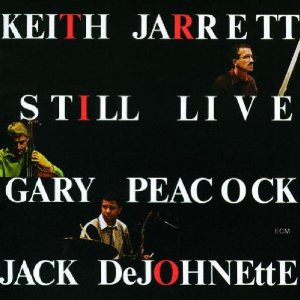 Next, I had to put on The Keith Jarrett Trio’s Still Live [ECM LP 835008-1]. This live LP sounded remarkably true to life. Listening to “When I Fall In Love” was absolutely breathtaking. It made me feel like I was in the Philharmonic Hall in Munich. The Trio was in motion and they were communicating beautifully. The timbre and harmonic structures were conveyed masterfully. The piano, drums and double bass were presented naturally and Keith Jarrett’s piano exploded with richness and a gorgeous presence. The brushwork of drummer Jack DeJonette was delicate and crisp and had vivid life. Finally, Gary Peacock on the double bass was articulate, organic and powerful.
Next, I had to put on The Keith Jarrett Trio’s Still Live [ECM LP 835008-1]. This live LP sounded remarkably true to life. Listening to “When I Fall In Love” was absolutely breathtaking. It made me feel like I was in the Philharmonic Hall in Munich. The Trio was in motion and they were communicating beautifully. The timbre and harmonic structures were conveyed masterfully. The piano, drums and double bass were presented naturally and Keith Jarrett’s piano exploded with richness and a gorgeous presence. The brushwork of drummer Jack DeJonette was delicate and crisp and had vivid life. Finally, Gary Peacock on the double bass was articulate, organic and powerful.
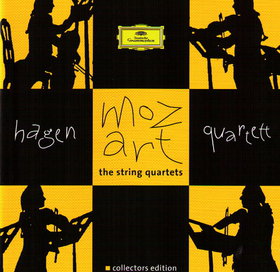 Next, listening to the must have boxed sets of Mozart: The String Quartets [DG 00289 477 6253] and Mozart: Divertimenti K. 136-138, was a joy! The first movement Andante from Divertimenti in B flat major K. 137 by the Hagen Quartet was breathtaking. The timbre quality of the strings was rendered remarkably beautiful and sounded naturally organic. In simpler terms, it just sounded more real. I was drawn into the music more intimately than ever before. The instruments existed in space as if I were listening to a live performance. I was in Heaven! I was losing precious sleep because I was up listening into the wee hours. I was drawn to the sound of the strings like never before.
Next, listening to the must have boxed sets of Mozart: The String Quartets [DG 00289 477 6253] and Mozart: Divertimenti K. 136-138, was a joy! The first movement Andante from Divertimenti in B flat major K. 137 by the Hagen Quartet was breathtaking. The timbre quality of the strings was rendered remarkably beautiful and sounded naturally organic. In simpler terms, it just sounded more real. I was drawn into the music more intimately than ever before. The instruments existed in space as if I were listening to a live performance. I was in Heaven! I was losing precious sleep because I was up listening into the wee hours. I was drawn to the sound of the strings like never before.
 The Unity has a natural warmth and richness from the upper bass to the lower treble which results in a more realistic presentation of stringed instruments.
The Unity has a natural warmth and richness from the upper bass to the lower treble which results in a more realistic presentation of stringed instruments.
It seemed the strings glided through the air with great fluidity and authority; yet they were very delicate. The speakers seemed to disappear completely and the imaging was outstanding. I put on one of my favorites Rossini’sSonate a Quattro N0.2 in A major with ensemble Explorations (HMC901776) and it sounded better than ever. The Unity in my system elevated the overall sound ever so slightly.
My Conspiracy loudspeakers were singing like never before. They were more musical and transparent, and the details conjured up more realism and made the string tones ever more real. The double bass was visceral and highly detailed down to the lowest note
Now that I have had the Unity cables in my system for some time, I can say easily I’m enjoying every moment. It’s easy to understand why three renowned speaker manufacturers chose the Jorma Design cables for their internal wiring. The folks at Marten Design, SW speakers from Sweden and Penaudio speakers from Finland must be on to something. Unfortunately, this quality comes at a price. The Unity cables are about two to three times the price of the ASI cables (depending on the type of cable). However, at the asking price, or at any price, the Jorma Design Unity cables are truly remarkable. They are not just true reference cables, they are my Stereo Times’ Most Wanted Component award winner for 2011. Highly recommended!!

![]()
Specifications:
Speaker cables: $5000/pair, each additional meter $1100
Bi-wire speaker cables: $7700/pair, each additional meter $1700
Bi-amp speaker cables: $8300/pair, each additional meter $1700
Interconnects, 1-meter (RCA/XLR): $4000/pair, each additional meter $700
US Distributor
E.A.R. USA
Dan Meinwald
1087 East Ridgewood Street
Long Beach, CA 90807
Tel. 562-422-4747
URL: http://ear-usa.com/index.html
E-mail: info@ear-usa.com
Jorma Design:
Website: www.jormadesign.com
Email: Jormadesign@hotmail.com
![]()
Don’t forget to bookmark us! (CTRL-SHFT-D)
Stereo Times Masthead
Publisher/Founder
Clement Perry
Editor
Dave Thomas
Senior Editors
Frank Alles, Mike Girardi, Russell Lichter, Terry London, Moreno Mitchell, Paul Szabady, Bill Wells, Mike Wright, and Stephen Yan,
Current Contributors
David Abramson, Tim Barrall, Dave Allison, Ron Cook, Lewis Dardick, John Hoffman, Dan Secula, Don Shaulis, Greg Simmons, Eric Teh, Greg Voth, Richard Willie, Ed Van Winkle, Rob Dockery, Richard Doran, and Daveed Turek
Site Management Clement Perry
Ad Designer: Martin Perry





Be the first to comment on: Jorma Design Unity Cables & Interconnects